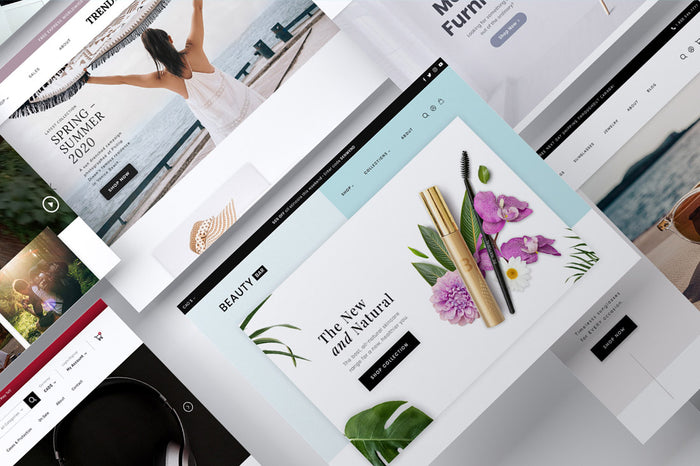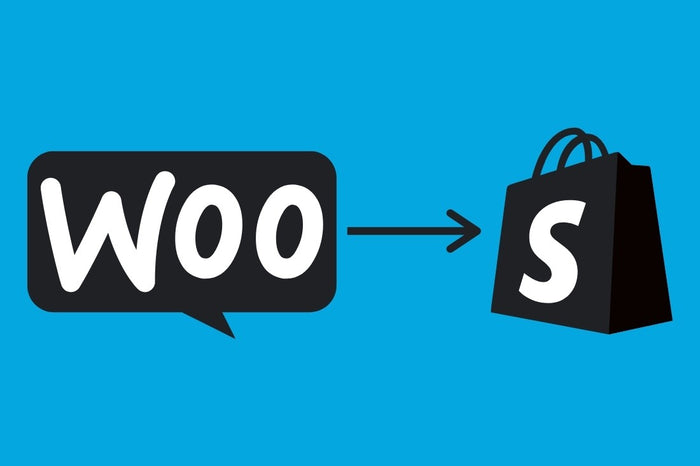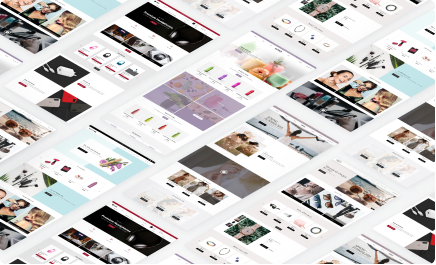2020 is an especially tricky time for email marketing. While customers are more connected than ever to their devices, they’re especially sensitive to being overly marketed to and tuning in to only what matters to them.
Here are some best practices, tips, and advice for navigating 2020 email marketing trends so that you can send email campaigns that connect with your customers and drive sales for your e-commerce site.
In this article, we’ll explore:
- Seven best practices for email marketing;
- Examples of these best practices; and
- Tips and advice for how to implement them into your email marketing campaigns.
7 Best Practices for Email Marketing in 2020
Here are seven tips to boost your email marketing campaigns:
-
Understand your audience

Before you get started on your email campaigns, understanding your subscribers and their wants and needs is crucial for the success of your marketing efforts.
This includes:
- Understanding what tone and language resonates most;
- When they are most likely to be checking their email;
- What makes your subscribers unique; and
- What drove them to subscribe to your emails in the first place.
You may already have some of this information from your sales and demographic data. Other information may require additional research—like a customer survey. Or you may simply need to collect it over time through trial and error.
But make learning about your audience a priority!
The more specific you can get about your email marketing subscribers, the better, as it will let you satisfy your customers with more relevant and emotionally poignant campaigns.
-
Test your emails before sending

It’s imperative that before you send out any email marketing campaign that you test your emails extensively to avoid mishaps. Nobody wants to see typos, broken links, or wonky formatting in an email sent out to thousands of subscribers.
Ideally, you’ll send a test email to at least two of your team members for review. Multiple pairs of eyes will catch mistakes and errors you missed on your own proofread.
You should also make sure that you’re testing your emails on multiple devices such as desktop, phones, and tablets to ensure that your formatting is clean and appealing across all platforms.
Finally, it may be helpful to create a checklist before you send out an email to check off each item as you complete it to avoid errors, such as:
- The subject line is correct and matches the campaign;
- The To: and From: fields are properly customized to subscribers with merge tags;
- All links are functional and lead to the correct pages in the corresponding languages (if your site has multiple languages);
- There are no typos or grammatical errors;
- The content is correctly formatted; and
- Required information like unsubscribe links, your location and contact information are included.
-
Avoid spam filters

It’ll be extremely difficult for your email marketing efforts to be successful if the email you send never even lands in your customers’ inboxes thanks to being caught by spam filters.
Some of the following tips for 2020 can help your emails avoid being triggered by spam filters:
- Add merge tags like first names to personalize the subject line and the To: field;
- Encourage subscribers to add your From: email address to their address books;
- Test your campaigns to make sure they get through to your inbox;
- Avoid copying and pasting text with Word formatting;
- Use a pre-built template in your email marketing platform, like in Shopify or MailChimp; and
- Always be certain you have permission from your customers to email them marketing campaigns by sending a confirmation email upon their subscription; and
- Send them relevant content only to avoid having customers mark your emails as spam.
By staying compliant with Canadian anti-spam legislation and sticking to the tips above, you’re much less likely to run into issues with spam filters.
-
Grab customers’ attention with a fantastic subject line

In 2020, with the realities of the COVID-19 pandemic, your customers’ attention will be pulled in every which way. They’ll be working full-time while homeschooling their children, while taking on additional responsibilities to help support their coworkers and family members.
Therefore, your subject lines need to be better than ever at capturing your subscribers’ attention and communicating to them that your marketing content is important.
Whether it’s by using witty headlines, urgency-creating language, or just getting straight to the point of what your campaign’s about, your headlines should be well thought out and never an afterthought of your email marketing efforts.
If you’re unsure about whether your headline is packing a punch, some general best practices are:
- Sticking to 60 characters or less (about 3 to 5 words);
- Avoiding the use of multiple emojis (but 1 is okay);
- Writing the subject line after your email marketing content is written;
- Honing in on a sense of urgency (without being too clickbait-y);
- Making it clear what your email is about.
Finally, you can also try using tools such as CoSchedule or SubjectLine.com’s free subject line testers to see if the subject lines you’ve written measure up.
-
Track KPIs and evaluate the success of your campaigns

Just like we discussed in our social media best practices post, it’s important to set specific goals for your email marketing campaigns, including KPIs (key performance indicators) such as click and open rates.
Open rates can help you determine whether your email headlines and subjects are drawing users in to open your emails. According to MailChimp, the average open rate for e-commerce emails is approximately 16%.
To exceed that 16% average, take note of which kinds of emails you send get the most opens. Is it promoting a sale or advertising a new product?
What kind of language in your headlines draws in the most subscribers? Is it creating urgency (hurry, time’s running out, ending today) or creating excitement (it’s here, get ready)?
Klaviyo did a study where they compared open, click, and conversion rates by key industries. These were the results:
| Industry | Open | CTR | Conversion | RPR | AOV |
|---|---|---|---|---|---|
| Animal & Pet Care | 12.60% | 1.10% | 0.08% | $0.05 | $57.88 |
| Arts & Crafts | 14.20% | 1.80% | 0.13% | $0.13 | $98.51 |
| Automobile & Parts | 15.80% | 1.60% | 0.08% | $0.17 | $220.71 |
| Beauty & Cosmetics | 10.80% | 1.00% | 0.10% | $0.06 | $65.81 |
| Computers, Electronics & Acc. | 13.80% | 1.10% | 0.06% | $0.05 | $77.23 |
| Fashion & Apparel | 11.40% | 1.30% | 0.08% | $0.08 | $96.83 |
| Food & Beverage | 12.60% | 1.10% | 0.16% | $0.15 | $93.67 |
| Garden & Home Goods | 12.20% | 1.10% | 0.08% | $0.09 | $116.79 |
| Health & Fitness | 12.50% | 1.20% | 0.15% | $0.09 | $60.61 |
| Jewelry & Accessories | 11.60% | 1.20% | 0.09% | $0.07 | $75.22 |
| Media & Entertainment | 17.30% | 1.90% | 0.09% | $0.03 | $29.06 |
| Outdoor & Wilderness Gear | 14.60% | 2.50% | 0.09% | $0.10 | $113.54 |
| Toys & Games | 13.10% | 1.80% | 0.11% | $0.14 | $129.11 |
| AVERAGE ACROSS INDUSTRIES | 11.81% | 1.24% | 0.09% | $0.08 | $86.07 |
Meanwhile, click rates can give key insights into whether your email marketing content is attracting customers to visit your site. Average click rates can be anywhere from 2-5% based on the industry.
For a kick-ass click rate, just like with open rates, it’s important to track these numbers over time to determine which email marketing campaigns are drawing shoppers to your website and what type of campaign consistently delivers (no pun intended).
A/B tests can also be extremely effective for narrowing down specific keywords that work best with your subscribers.
-
Combat email fatigue

In 2020, we’re in an unfortunate reality where many people are working from home due to COVID-19 and are plugged in to their personal computers and mobile devices. All. Day.
Just like with Zoom fatigue, email fatigue is setting in, so you may see this reflected in a decrease in open or click rates.
Therefore, you should be extremely mindful of the amount of content that you’re issuing. Don’t bombard your subscribers with constant email marketing, since they’re most likely already juggling multiple priorities on top of managing their inbox.
To combat email fatigue, ask yourself the following questions:
- Do I need to send this email campaign?
- Could this be combined with another email?
- Is this email campaign providing useful, relevant content to my subscribers or just adding to the noise?
- Could I offer an option to my subscribers to receive emails around certain topics or frequencies only instead of sending all subscribers every single email?
If you focus on quality rather than quantity with your email marketing campaigns, your subscribers will thank you for it through an increased number of clicks and sales.
-
Create customer segments

Personalizing your email content is becoming more and more popular in 2020. One of the best ways to personalize emails that truly connects with your audience is by creating customer segments.
If you’re able to segment by demographics such as geographic location, age, gender, and recent purchases, you could create more targeted email marketing campaigns that are more relevant to your subscribers and drive traffic to your site.
For example, if you’re an outdoor gear company, segmenting by location can help you market products based on the season, like parkas and winter accessories for colder Canadian cities, but lighter layers for cities like Vancouver.
Create Amazing Email Marketing Campaigns

Now that you’ve learned some important email marketing tips and trends for 2020, you’re ready to send email campaigns that attract customers to your website and drive sales for your business.
However, if you’re new to email marketing, getting started might seem like an overwhelming task. Luckily, Marketplace Solutions is here to help.
If you’re working with Shopify and want to set up a template that aligns with your branding that avoids tripping any spam filters and that sets you up for email marketing success, our experts at Marketplace Solutions can help you create one.
Contact Marketplace Solutions today to discuss how we can help build your Shopify business using Email!
Get Started >






